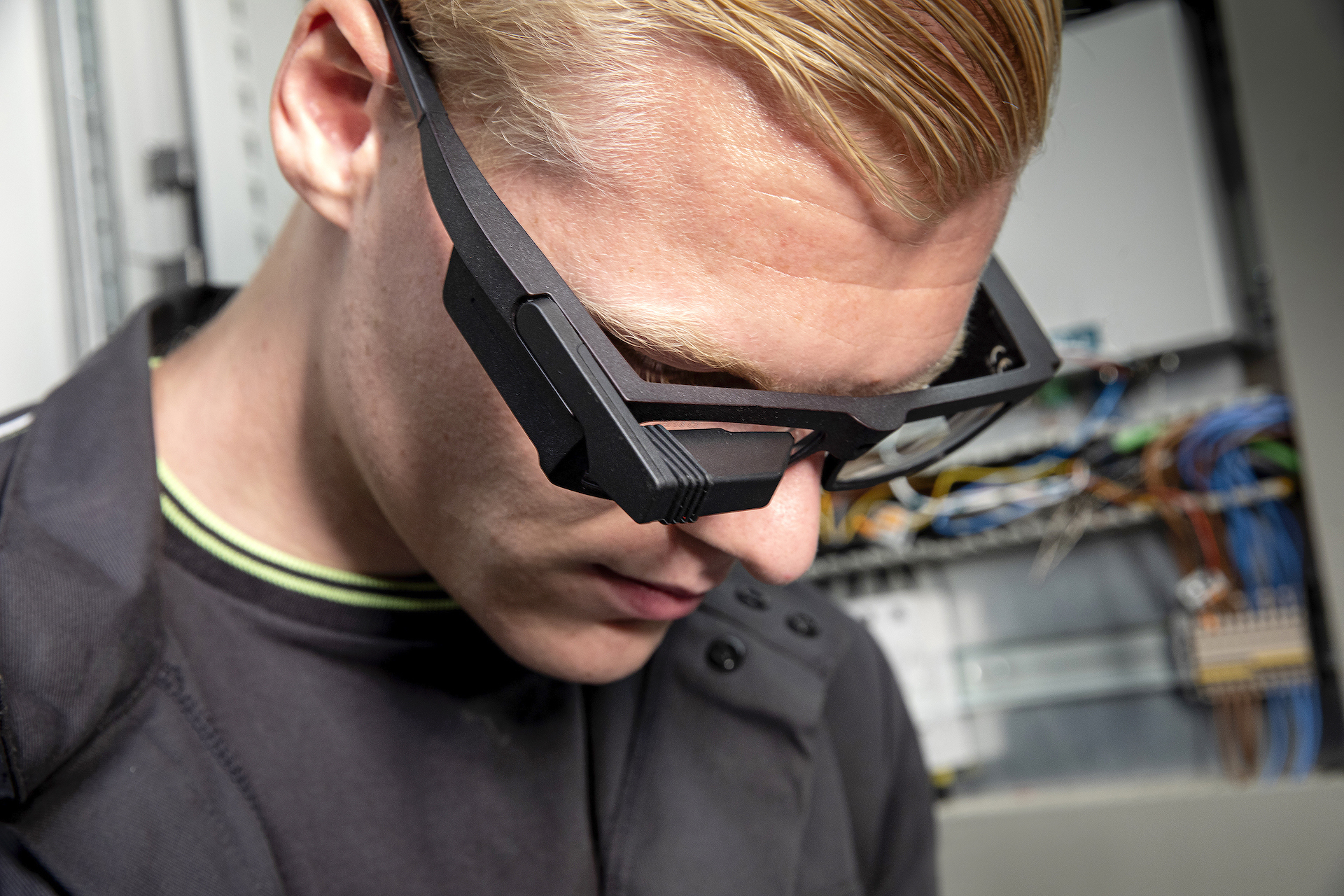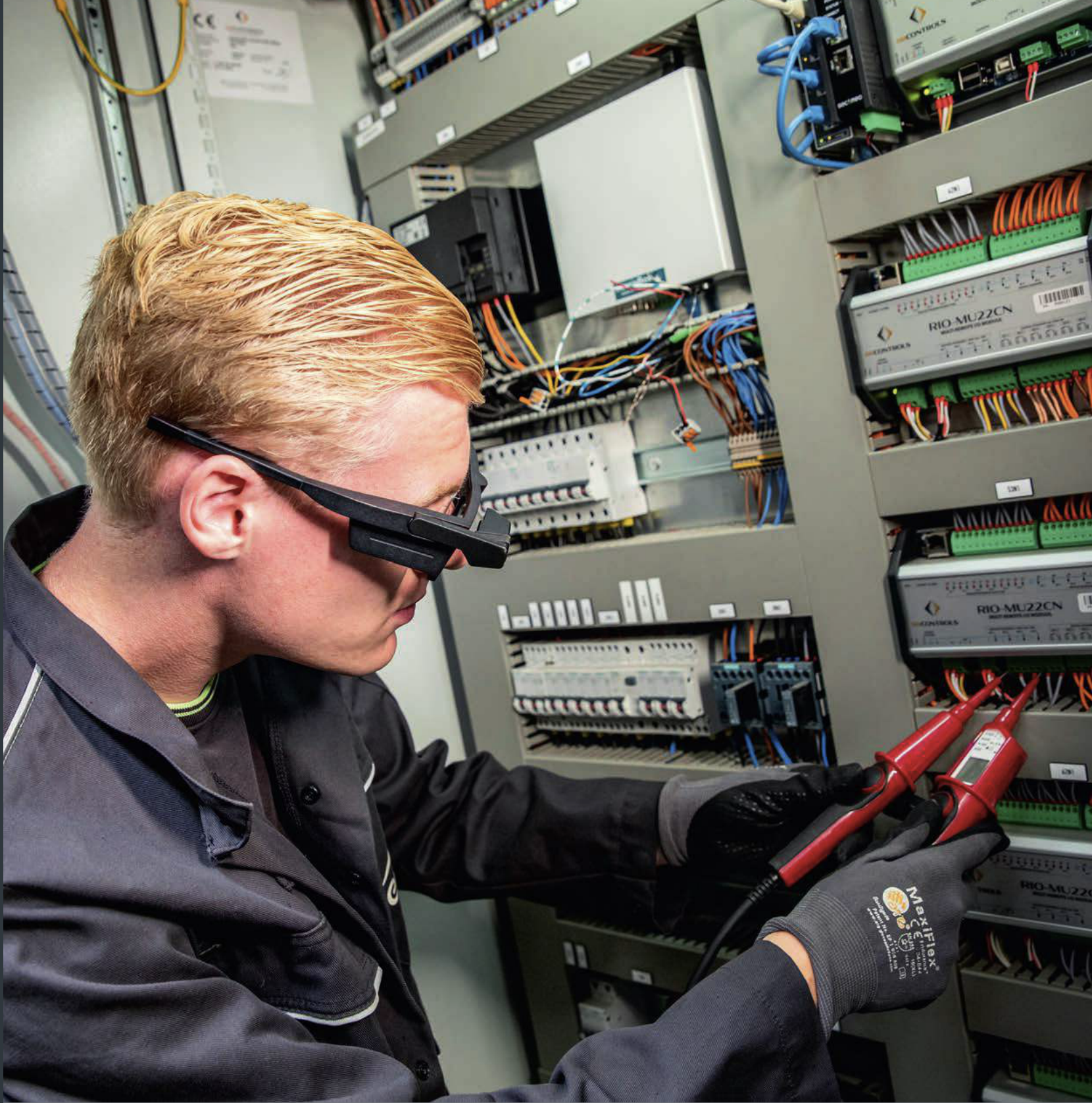Remote assistance via smart glasses allows operators, frontline workers and technicians in the field to instantly connect remotely with a technical expert off-site for remote support and advice to solve a problem. With a working internet connection, the distant expert can see what the wearer of the smart glasses is seeing as if they are present on-site as well. This new way of collaborating has opened many doors for industrial enterprises to keep operations running with minimal crew on site. Besides this, industrial smart glasses bring along many other benefits that favour enterprises for the better.
#1. Speed: real-time feedback leads to minimum machine downtime
The current dynamics in many industries demand quick responses to any possible issue that may arise on the shop floor, in the warehouse, or at the assembly line. This is where one of the undisputed advantages of smart glasses enabled remote assistance lies: the expert can help in real-time by commenting, giving advice, zooming in on details and asking the operator to do certain things on-site. The real-time feedback makes it possible to try out different solutions, diagnose and eliminate problem causes and work with 2 persons on the same problem. The result is obvious: shorter intervention time and minimum machine downtime or process delay.
Not only are problems solved faster, but there is also the time gained by the expert who doesn’t have to travel all the time from one problem site to the other. The expert can spread his precious time to help more operators instead of losing time in traffic jams or spending time waiting to take the next flight.

#2. Efficiency: improved availability, performance and quality of industrial activities
Improving productivity, by eliminating waste, is a key objective in any manufacturing company, and especially in companies that operate according to lean manufacturing principles. Of course, improving requires measuring. Overall Equipment Effectiveness (OEE) is a universally accepted metric for measuring productivity and is defined as the product of Availability x Performance x Quality.
By using smart glasses with a remote assistance solution to support distant operators and deskless workers, companies have managed to improve their availability, performance and quality rates.
2.1. Increase availability infrastructure
The availability rate represents any downtime losses. Maintenance technicians, guided in real-time via smart glasses, to solve problems at capital investment infrastructure, directly within their line of sight, are able to improve both the speed and quality of their maintenance and repair work. Operators can perform complex or rare set-ups and changeovers guided by a distant expert faster and with fewer mistakes, reducing the amount of process adjustments needed. These are just a few examples of how smart glasses can help minimize downtime and increase availability.
2.2. Improved performance
The performance rate represents any speed losses. The availability and accessibility of vital information supports greater overall productivity, enabling workers to do their jobs with first-time-right quality, and resolve any issues quickly and efficiently, all while keeping their hands free. Simply reducing the amount of rework can already have a very positive impact on the performance rate. Making sure machines are set up properly and according to the correct process parameter settings is critical as well for optimal quality and performance (i.e. production speed). All of which can be supported by remote assistance solutions or digital work instruction applications on smart glasses.

2.3. Improved quality by reducing rework and first-time-right set-ups
The quality rate represents any quality losses. Lack of compliance with standardized work procedures can lead to increased quality defects, cause significant complaints, returns, and claims, and possibly even have catastrophic consequences. Better than any other tool currently available, remote assistance and digital work instructions on smart glasses support standardized work, significantly improving first-time-right setups and first-time-right production activities, resulting in dramatically reduced scrap and rework.
#3. Safety and health of the operator: having both hands free to focus on the job
Smart glasses hold two unique advantages over mobile technology (smartphones and tablets) in an industrial context. The smart glasses embedded cameras perfectly capture the wearer’s perspective when establishing a video streaming session for remote assistance. ‘You-see-what-I-see’ is not a marketing slogan but a reality, in which the distant expert exactly sees what the glasses wearer is seeing.
Moreover, smart glasses are the best devices when you need both hands free to do the job or to work safely. Imagine a maintenance engineer on an offshore drilling platform or high up in a wind generator, performing a complex maintenance task while having a real-time streaming session with a highly trained expert on the mainland. He can communicate with the expert via the built-in microphones and video camera, he can zoom in on details, using voice commands and at the same time perform certain actions on the equipment he is maintaining. With his eyes focused on the job and both hands available to do the job, his safety is guaranteed to the maximum. Remote assistance is the safest way for field workers to collaborate in real-time with a distant expert.
#4. Knowledge sharing and training: smart glasses shorten training time
Manufacturers are facing a shortage of skilled workers. Retiring workers, economic expansion, and a widening skills gap are all contributing factors. According to the U.S. Bureau of Labor Statistics, the average tenure of a new worker in manufacturing is just 5.3 years. The hardest positions to fill are typically the ones that have the biggest impact on performance. Technical positions such as controls engineers, skilled operators, technicians, and machinists, are critical to expanding operations and improving productivity. These are also the positions that require the most training and investment. On top of that, the Covid pandemic imposed travel restrictions and restrictions to physically work together at a certain facility, making it even more difficult to onboard and train young field technicians or other field workers.
However, companies are struggling to train and cross-train people fast enough, to achieve the kind of labor flexibility needed in today’s increasingly complex low volume - high variety environment. Remote assistance via smart glasses can guide a young or less trained operator through a complex or rare task when needed. This is shortening the training time and at the same time guaranteeing that work is done the first-time-right.

Another use case of knowledge sharing is via remote training. In this regard, the operator at work can connect with students or young workers who can follow the work of the expert and learn how certain tasks are done. An example of this is a surgeon streaming a complex medical procedure in the operating room, while students or assistants are following in another room.
It is clear that remote assistance via smart glasses delivers immense benefits to enterprises ranging from improved productivity to fewer errors, to training and knowledge transfers. A key factor are the numerous features embedded in the glasses which allow sharing valuable information instantly while working hands-free. The multiple benefits of smart glasses manifest the importance to transform enterprise processes and their untapped potential for the future.